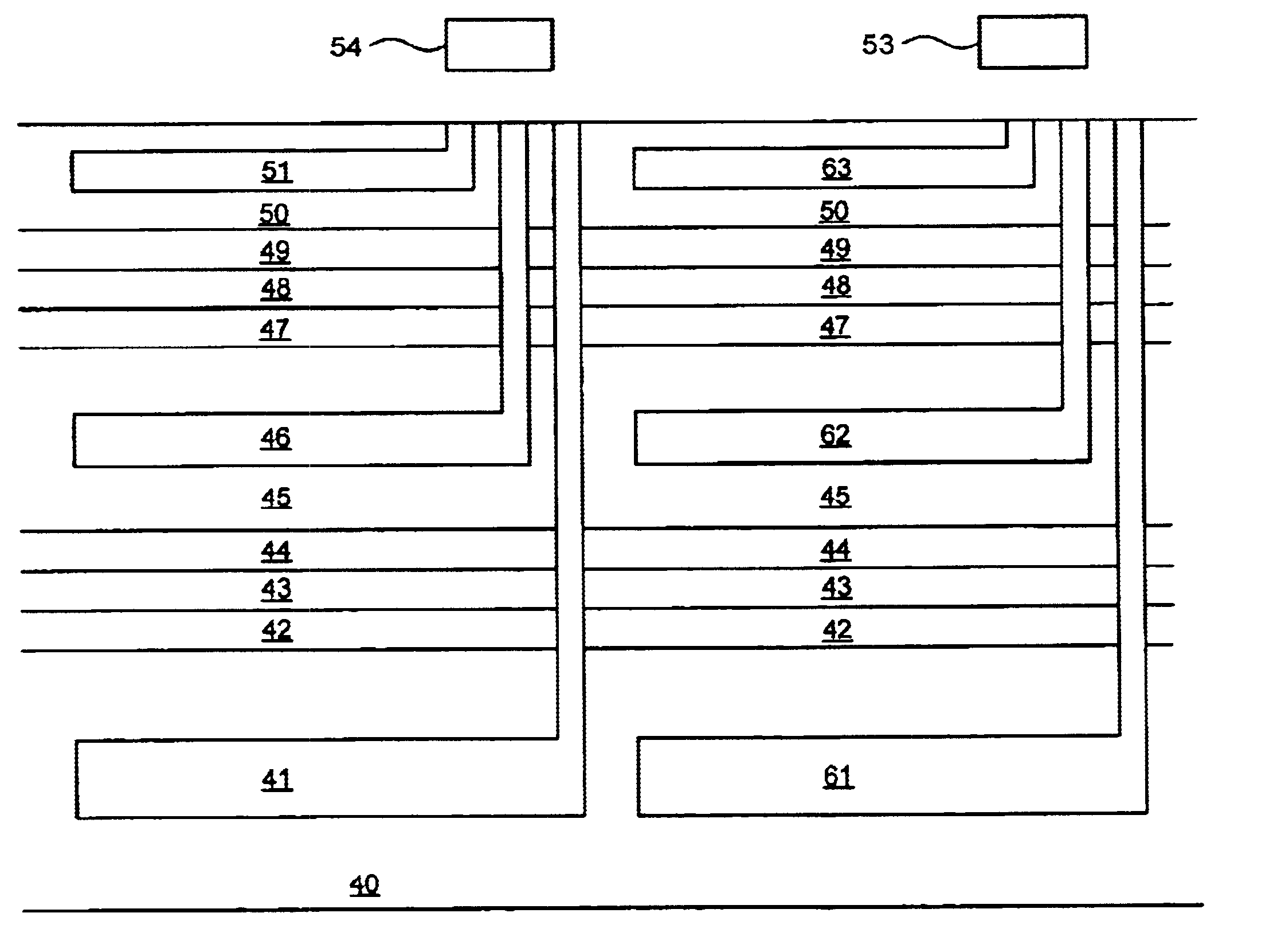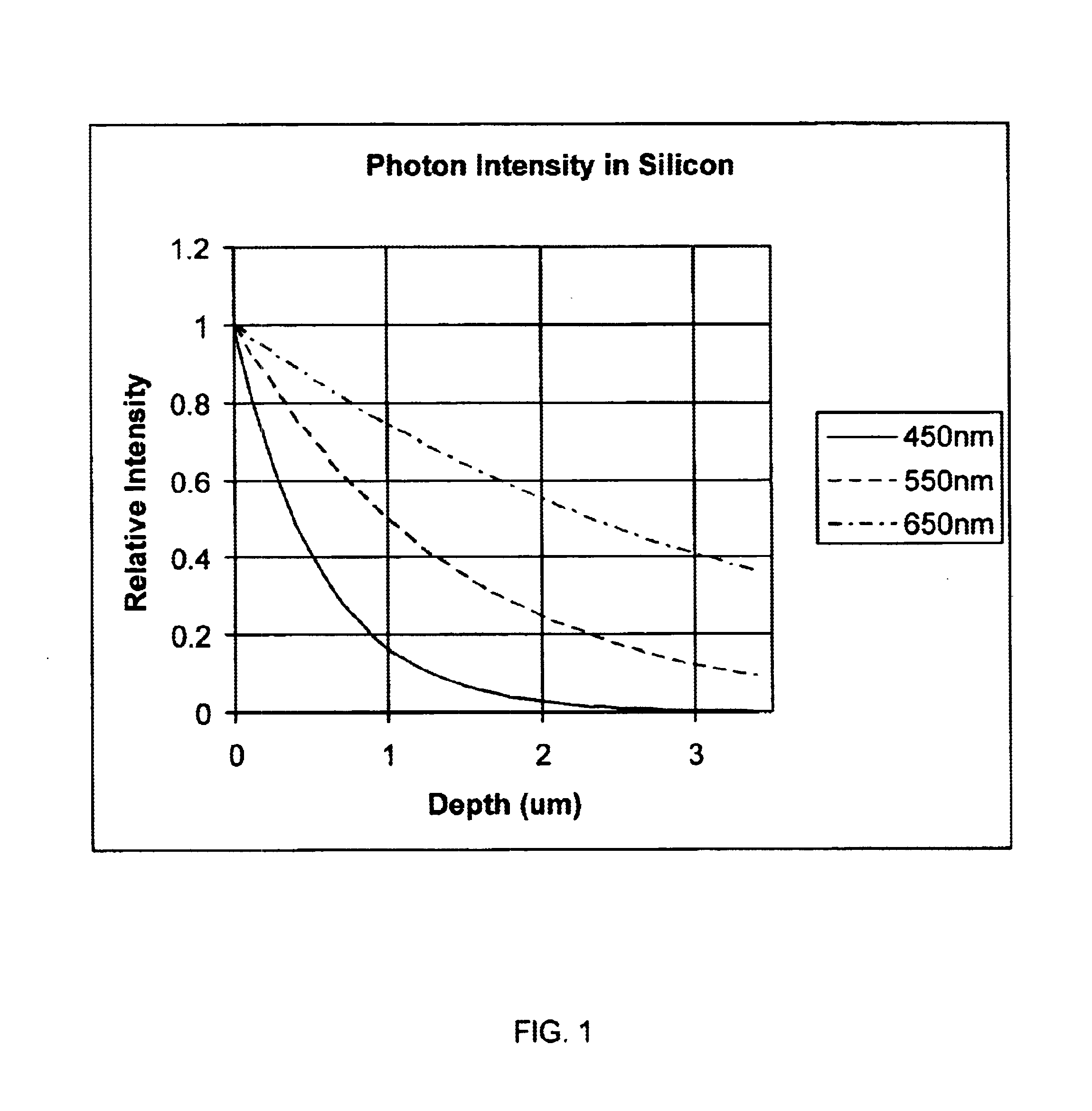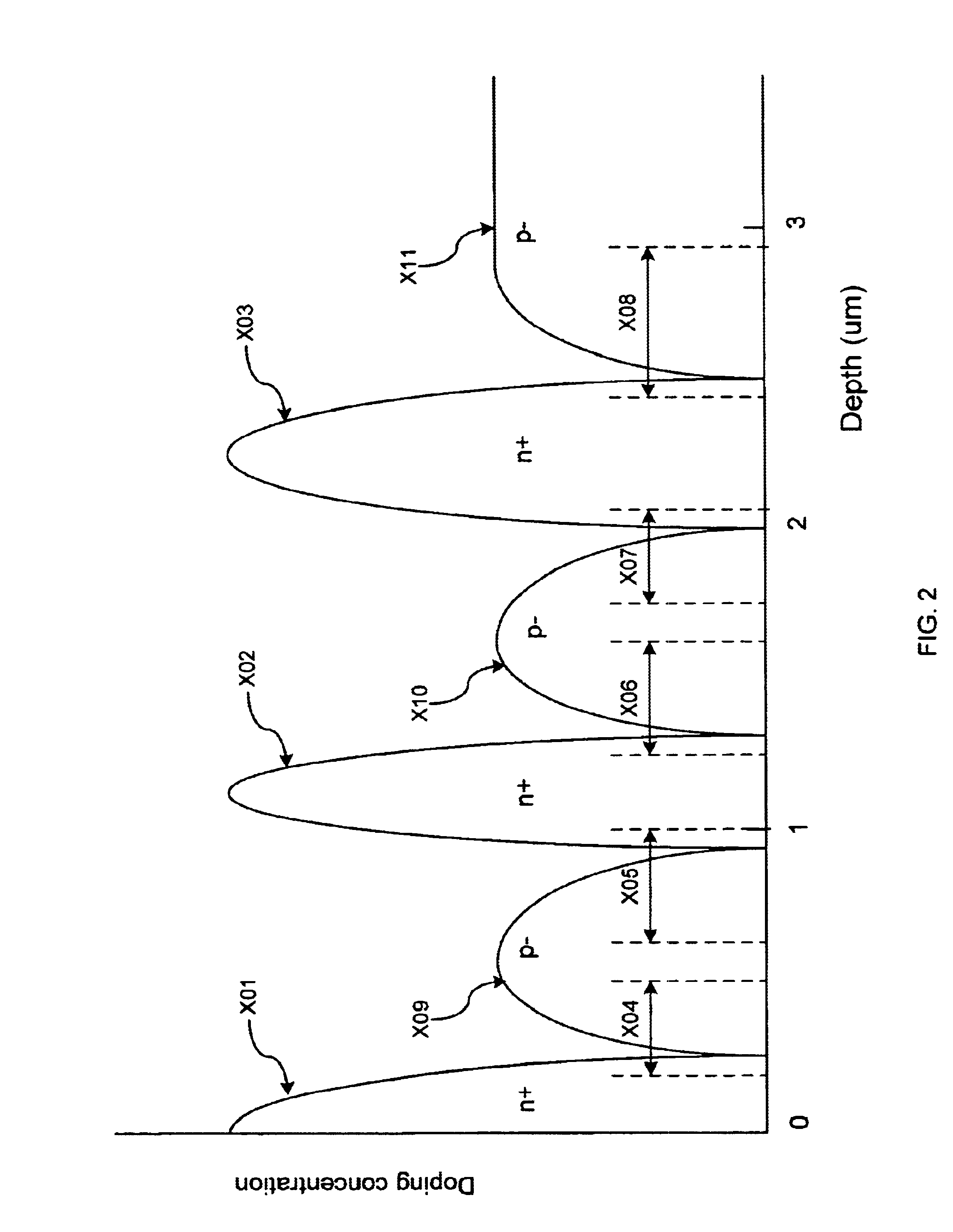Vertical color filter sensor group with non-sensor filter and method for fabricating such a sensor group
- Summary
- Abstract
- Description
- Claims
- Application Information
AI Technical Summary
Problems solved by technology
Method used
Image
Examples
Embodiment Construction
rmed during a subsequent stage of the multi-stage implantation process) whose bottom portion is shown in both FIGS. 18 and 18A.
[0052]FIG. 19 is a graph of the mask thickness required during typical implantation of Boron, Phosphorus, Arsenic, and Antimony, for each of five indicated masking materials.
[0053]FIG. 20 is a simplified cross-sectional view (in a vertical plane) of an embodiment of the inventive VCF sensor group including a blanket barrier layer (205) between two sensors.
[0054]FIG. 21 is a graph of dopant concentration as a function of depth in the sensor group of FIG. 20.
[0055]FIG. 22 is a simplified cross-sectional view (in a vertical plane) of a variation on the sensor group of FIG. 20, including conventional blanket barrier implants rather than the inventive blanket barrier layer 205.
[0056]FIG. 23 is a graph of dopant concentration as a function of depth in the sensor group of FIG. 22.
[0057]FIG. 24 is a simplified cross-sectional view (in a vertical plane) of another em...
PUM
 Login to View More
Login to View More Abstract
Description
Claims
Application Information
 Login to View More
Login to View More - R&D
- Intellectual Property
- Life Sciences
- Materials
- Tech Scout
- Unparalleled Data Quality
- Higher Quality Content
- 60% Fewer Hallucinations
Browse by: Latest US Patents, China's latest patents, Technical Efficacy Thesaurus, Application Domain, Technology Topic, Popular Technical Reports.
© 2025 PatSnap. All rights reserved.Legal|Privacy policy|Modern Slavery Act Transparency Statement|Sitemap|About US| Contact US: help@patsnap.com



